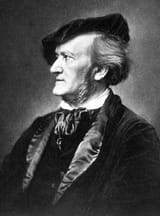Search Results
7/23/2025, 7:01:47 AM
In Meistersinger's harmonies, one hears the echoes of Bach's intricate counterpoint, as if the ghostly specter of the Baroque master had momentarily forsaken the organ in favor of the opera house.
Richard Wagner once said of Johann Sebastian Bach’s music: “That made me what I am. My unending melody is predestined in it.” In Die Meistersinger von Nürnberg, Wagner demonstrated to post-Tristan sceptics his mastery of traditional musical forms. Sonorous chorales, an overture which Wagner described as 'applied Bach', a fugally-inspired toccata, an unforgettable quintet and counterpoint worthy of Bach all feature in this magnificent score celebrating the marriage of inspiration and tradition.
The whole of Die Meistersinger— shaping itself before our very ears — is Wagner's answer to his critics, a song offered them to meet their specifications, filled with all the things they demanded and found wanting in his other work: diatonic structures, counterpoint, singable tunes, ensembles, folk dances worthy of Weber and chorales worthy of Bach.
Richard Wagner once said of Johann Sebastian Bach’s music: “That made me what I am. My unending melody is predestined in it.” In Die Meistersinger von Nürnberg, Wagner demonstrated to post-Tristan sceptics his mastery of traditional musical forms. Sonorous chorales, an overture which Wagner described as 'applied Bach', a fugally-inspired toccata, an unforgettable quintet and counterpoint worthy of Bach all feature in this magnificent score celebrating the marriage of inspiration and tradition.
The whole of Die Meistersinger— shaping itself before our very ears — is Wagner's answer to his critics, a song offered them to meet their specifications, filled with all the things they demanded and found wanting in his other work: diatonic structures, counterpoint, singable tunes, ensembles, folk dances worthy of Weber and chorales worthy of Bach.
Page 1
